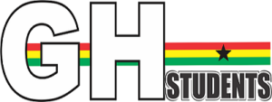The race for university admission is expected to heighten next year when about 400,000 Free SHS beneficiaries are expected to complete school and seek university admission.
The problem is compounded by the backlog of students seeking admission into the country’s tertiary institutions. This backlog of about 200,000 students, created by merging two batches of SHS 4 and SHS 3 students who sat for the West Africa Senior High School Certificate Examination in 2013, still exists.
This development puts pressure on Senior High School graduates outside the Free SHS programme to do all they can to secure admission into the country’s public and private tertiary institutions this year, or risk competing with over 400,000 Free SHS beneficiaries for limited spaces in tertiary institutions.
B&FT’s analysis of university admissions revealed there is already a reduction of intake admissions by major universities in the country, largely due to limited space to accommodate students.
The reality, however, is that the Free SHS beneficiaries graduating next year are more in number than the entire student population of the 138 tertiary institutions in the country at the moment.
The 138 tertiary institutions, including colleges of education and nursing training, have an entire student population of 320,746 covering all batches. They have the capacity to admit about 100,000 students yearly as a result of limited infrastructure.
This means that next year these institutions may not even be able to admit half of the over 400,000 students who are expected to apply for admission into the various tertiary institutions.
The Free Senior High School policy will enter its third year in September, and per the B&FT’s analysis the total student population in secondary schools across the country could hit over one million
Before the Free SHS programme was introduced, the total population of students in SHS stood at 432,780 per the 201 6 academic year data – with GHe2,312 spent on each student per year by the government.
However, the first year of the programme’s implementation saw the enrolment of over 400,000 students in various secondary schools. Last year, about 500,000 students also benefitted from the programme. If the programme continues as expected, there could be over one million students accessing secondary education free of charge in the country.
The 2017 Education Sector Report indicates that there is 95 per cent primary school enrolment, 85 per cent Junior High School and 45 per cent gross enrolment in SHS education.
This means that five out of every 10 children who start primary school in Ghana do not get the opportunity to attend SHS. But this could significantly reduce as the Free SHS programme has encouraged a lot of enrolment at the secondary school level.
The B&FT’s analysis shows that before the Free SHS was introduced, almost half of Junior High School students who wrote the Basic Education Certificate Examination (BECE) could not enter secondary school for various reasons — ranging from lack of funds to lack of infrastructure to accommodate all qualified students in the same period.
In 2014/2015, for example, about 438,030 students wrote the BECE – but only 275,609 of them got annually.
The introduction of Free SHS in 2017, however, brought in an additional 90,000 students, who would have missed out on SHS education.
This increased the number of students for the first time to 400,000; but this has put enormous pressure on the existing infrastructure, which various commentators have urged the government to resolve.
Read the full story in Monday’s edition of the Business and Financial Times newspaper.




